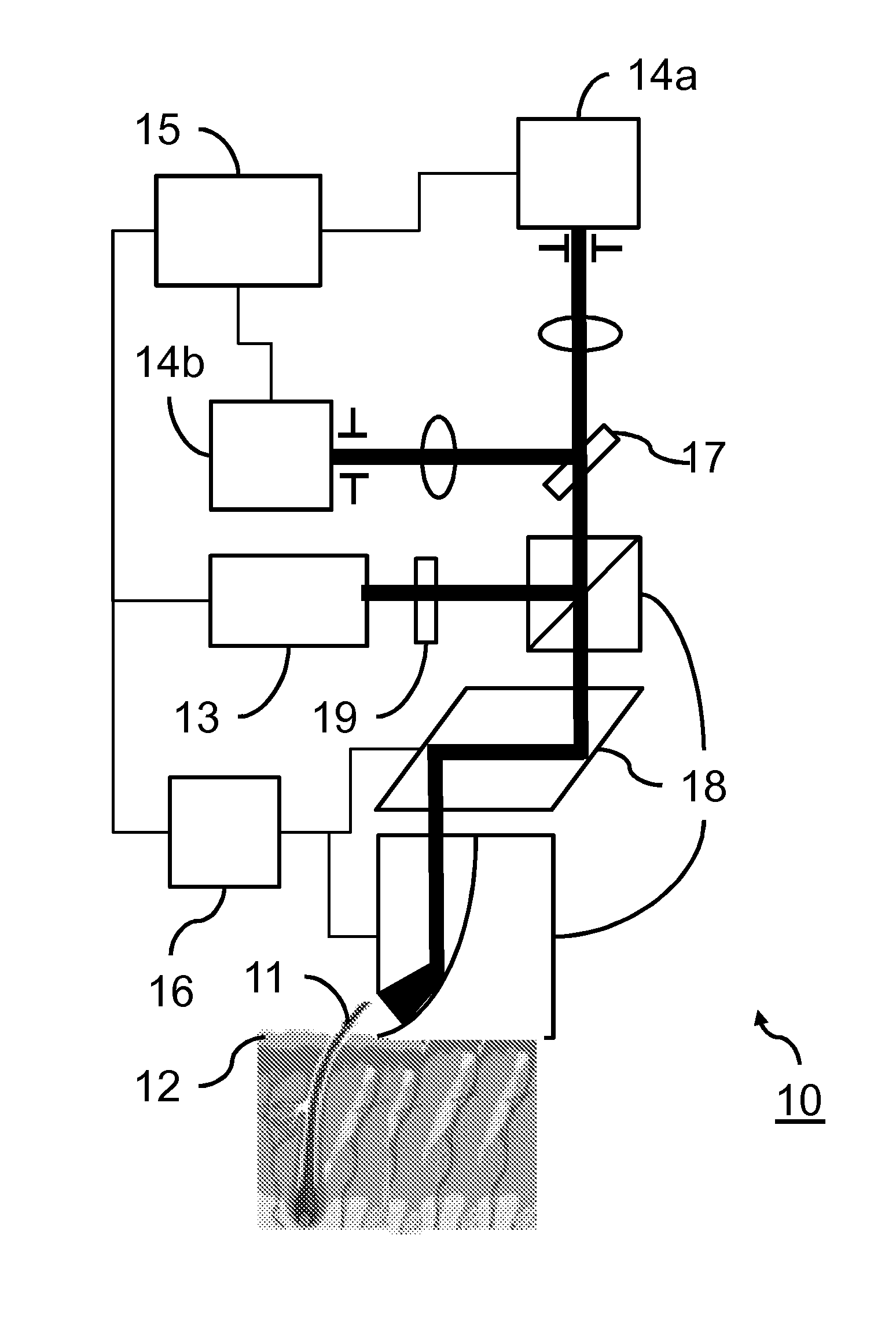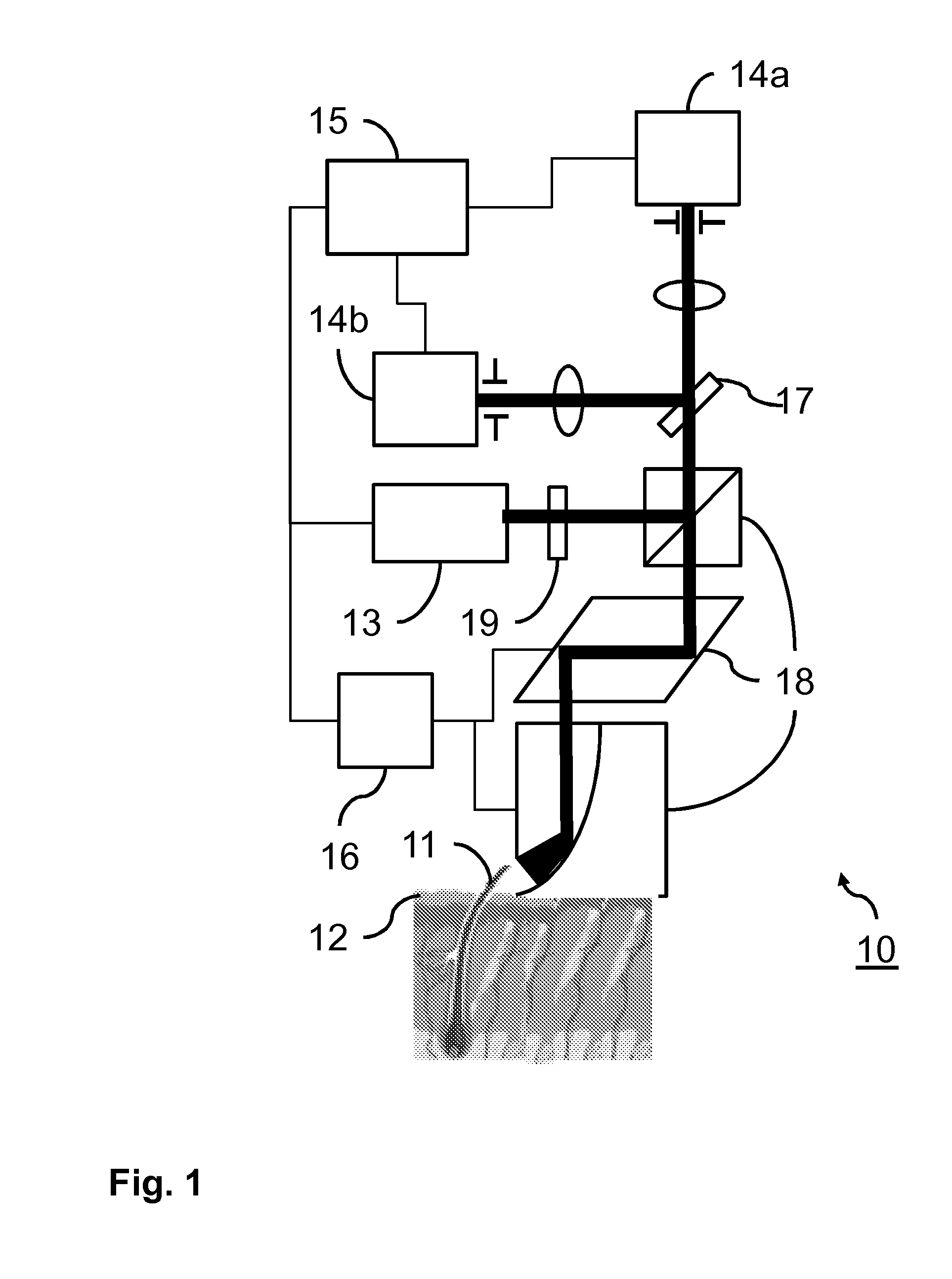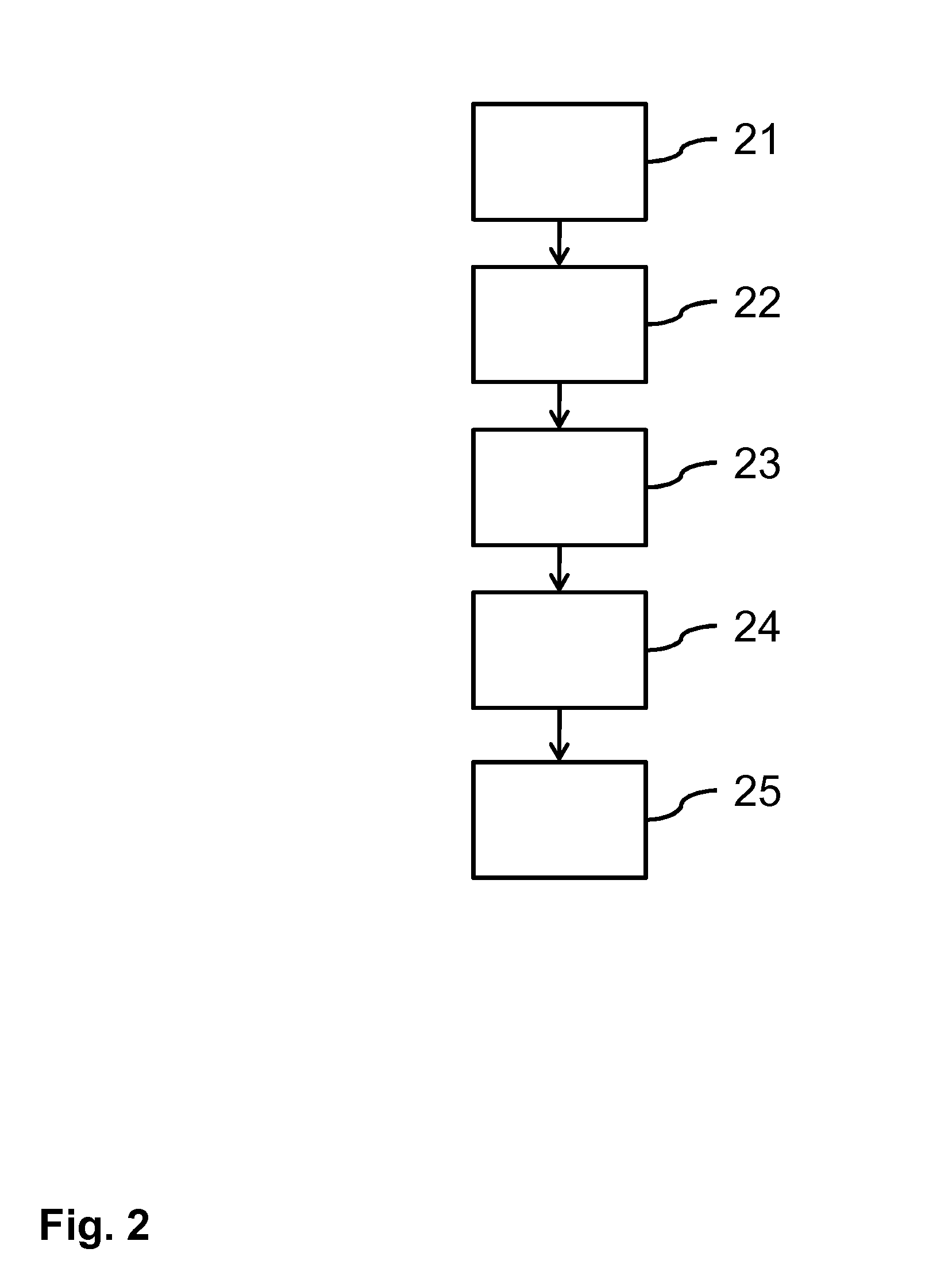Hair treatment device having a light-based hair detector
a hair treatment device and light-based technology, applied in the direction of instruments, applications, diagnostic recording/measuring, etc., can solve the problem of less successful discrimination between hair and skin, and achieve the effect of improving sensitivity and specificity
- Summary
- Abstract
- Description
- Claims
- Application Information
AI Technical Summary
Benefits of technology
Problems solved by technology
Method used
Image
Examples
Embodiment Construction
[0028]FIG. 1 schematically shows a light-based detector 10 for detecting hairs constituting birefringent objects for use in a hair treatment device according to the current invention. The light-based detector 10 is adapted to detect hairs 11 on human or animal skin 12. Hair detection may be useful in IPL (Intense Pulsed Light) based or laser based hair cutting (shaving) or hair removal apparatuses.
[0029]The light-based detector 10 of FIG. 1 comprises a laser source 13 for emitting a laser beam, preferably in the near-infrared or infrared part of the spectrum. For example, light with a wavelength of 785 or 850 nm may be used. A polarizer 19 is used to provide a light beam with a well-defined incident polarization state. The incident polarization state may be a linear or elliptical polarization state. Optical elements 18 focus the polarized light beam on the skin 12. A control unit 16 coupled to the laser source 13 and / or (part of) the optical elements 18 controls the exact optical pa...
PUM
 Login to View More
Login to View More Abstract
Description
Claims
Application Information
 Login to View More
Login to View More - R&D
- Intellectual Property
- Life Sciences
- Materials
- Tech Scout
- Unparalleled Data Quality
- Higher Quality Content
- 60% Fewer Hallucinations
Browse by: Latest US Patents, China's latest patents, Technical Efficacy Thesaurus, Application Domain, Technology Topic, Popular Technical Reports.
© 2025 PatSnap. All rights reserved.Legal|Privacy policy|Modern Slavery Act Transparency Statement|Sitemap|About US| Contact US: help@patsnap.com



